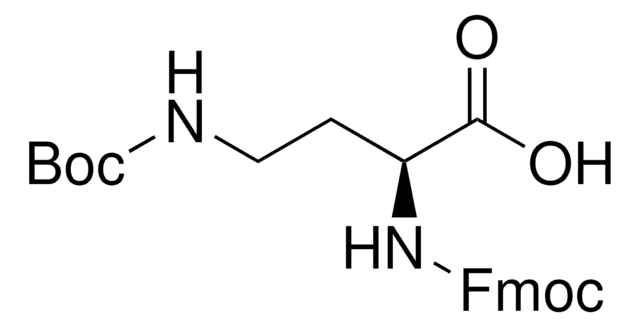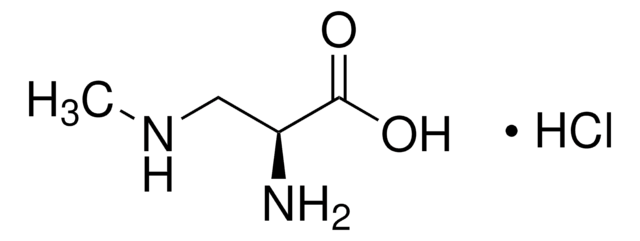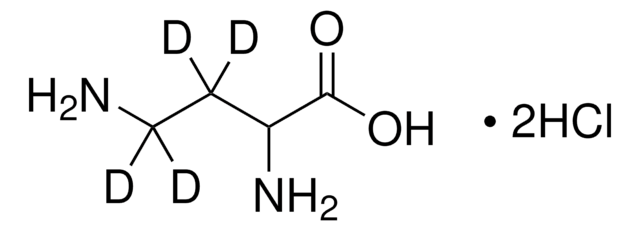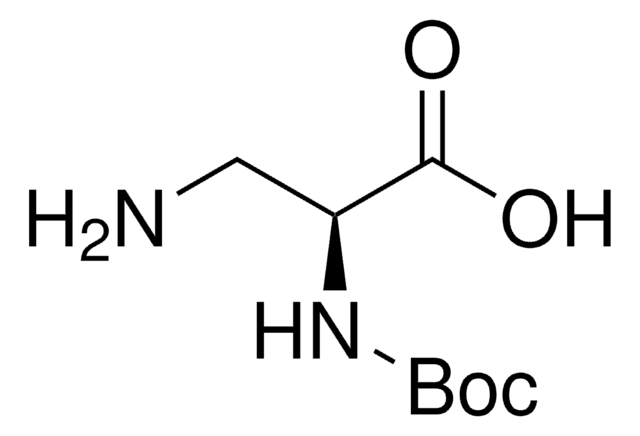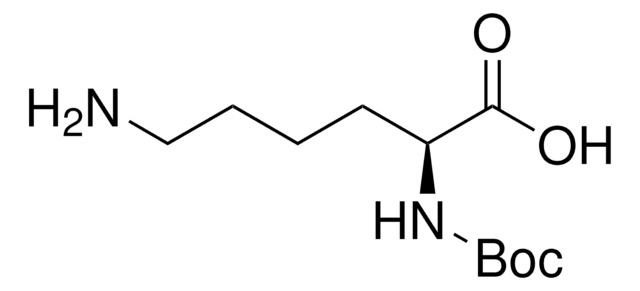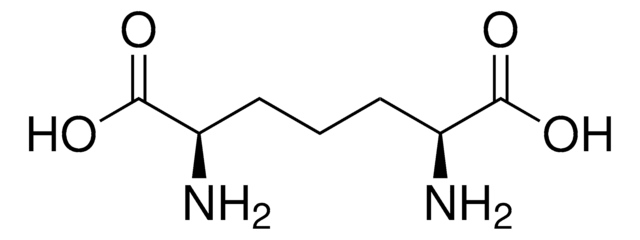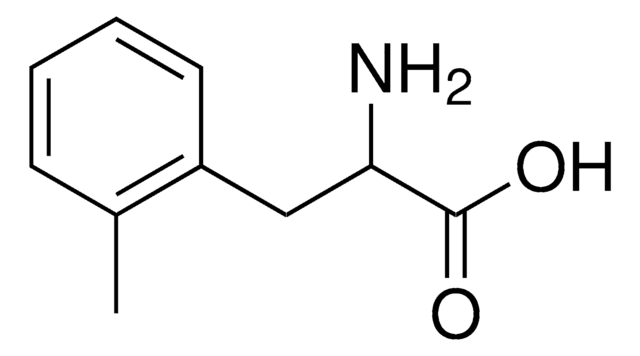32830
L-2,4-Diaminobutyric acid dihydrochloride
≥95.0%
Sinónimos:
(2S)-2,4-Diaminobutanoic acid dihydrochloride, L-2,4-Diaminobutanoic acid dihydrochloride
About This Item
Productos recomendados
Quality Level
assay
≥95.0% (AT)
≥95.0%
optical activity
[α]20/D +14.5±1.5°, c = 3.67% in H2O
reaction suitability
reaction type: solution phase peptide synthesis
mp
197-200 °C (dec.)
solubility
water: soluble 0.5 g/10 mL
application(s)
peptide synthesis
SMILES string
Cl.Cl.NCC[C@H](N)C(O)=O
InChI
1S/C4H10N2O2.2ClH/c5-2-1-3(6)4(7)8;;/h3H,1-2,5-6H2,(H,7,8);2*1H/t3-;;/m0../s1
InChI key
CKAAWCHIBBNLOJ-QTNFYWBSSA-N
¿Está buscando productos similares? Visita Guía de comparación de productos
Categorías relacionadas
General description
Application
Caution
signalword
Danger
hcodes
Hazard Classifications
Eye Dam. 1 - Skin Irrit. 2 - STOT SE 3
target_organs
Respiratory system
Storage Class
11 - Combustible Solids
wgk_germany
WGK 3
flash_point_f
Not applicable
flash_point_c
Not applicable
ppe
dust mask type N95 (US), Eyeshields, Gloves
Elija entre una de las versiones más recientes:
¿Ya tiene este producto?
Encuentre la documentación para los productos que ha comprado recientemente en la Biblioteca de documentos.
Nuestro equipo de científicos tiene experiencia en todas las áreas de investigación: Ciencias de la vida, Ciencia de los materiales, Síntesis química, Cromatografía, Analítica y muchas otras.
Póngase en contacto con el Servicio técnico
